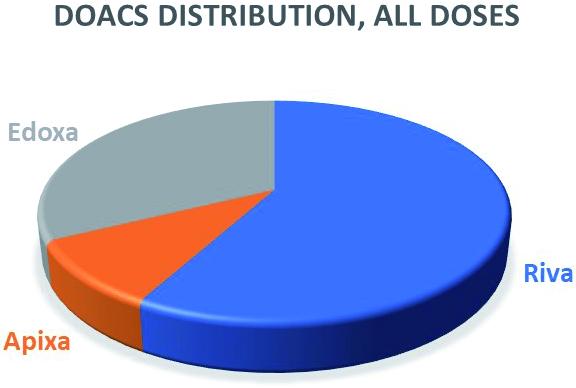Abstracts from the 29^ National Conference of the Italian Society for the Study of Hemostasis and Thrombosis, Bergamo, Italy | 23-25 October 2025
Vol. 4 No. s1 (2025)
PO37 | Single centre experience on anticoagulation in carriers of non-mild inherited thrombophilia: direct oral anticoagulants (DOAC) efficacy and safety
M. D’uva1,2, G. La Barba1, G. Montanaro1, M. Di Ianni1,2, P. Ranalli1,2 | 1Hematology Unit, S. Spirito Hospital, Pescara; 2Department of Medicine and Aging Sciences, D’Annunzio University, Chieti, Italy
Publisher's note
All claims expressed in this article are solely those of the authors and do not necessarily represent those of their affiliated organizations, or those of the publisher, the editors and the reviewers. Any product that may be evaluated in this article or claim that may be made by its manufacturer is not guaranteed or endorsed by the publisher.
All claims expressed in this article are solely those of the authors and do not necessarily represent those of their affiliated organizations, or those of the publisher, the editors and the reviewers. Any product that may be evaluated in this article or claim that may be made by its manufacturer is not guaranteed or endorsed by the publisher.
Published: 22 October 2025
359
Views
0
Downloads
Similar Articles
- PO34 | A negative oncologic follow up doesn’t always really mean no cancer: two case report of cancer-associated thrombotic microangiopathy , Bleeding, Thrombosis and Vascular Biology: Vol. 4 No. s1 (2025)
- PO63 | Atypical venous thrombosis in young patient with systemic lupus erythematosus and high-risk APL profile: provoked or not? , Bleeding, Thrombosis and Vascular Biology: Vol. 4 No. s1 (2025)
- PO95 | Idiopathic thrombocytopenic purpura in tuberculosis , Bleeding, Thrombosis and Vascular Biology: Vol. 4 No. s1 (2025)
- PO35 | Cerebral veins thrombosis in patients with and without myeloproliferative neoplasm: a real life retrospective monocentric study , Bleeding, Thrombosis and Vascular Biology: Vol. 4 No. s1 (2025)
- PO64 | A silent hemorrhage in the immuno-thrombotic chaos of antiphospholipid syndrome , Bleeding, Thrombosis and Vascular Biology: Vol. 4 No. s1 (2025)
- PO96 | Patient management with arteriovenous thrombotic manifestation and hemorrhagic complications , Bleeding, Thrombosis and Vascular Biology: Vol. 4 No. s1 (2025)
- PO36 | Venous stenting for symptomatic iliac thrombosis: five-years experience of single center , Bleeding, Thrombosis and Vascular Biology: Vol. 4 No. s1 (2025)
- PO65 | Utilization of emicizumab in acquired hemophilia A: a case report , Bleeding, Thrombosis and Vascular Biology: Vol. 4 No. s1 (2025)
- Guest Editor: Valerio De Stefano, 29th National Conference of the Italian Society for the Study of Hemostasis and Thrombosis, 2025 , Bleeding, Thrombosis and Vascular Biology: Vol. 4 No. s1 (2025)
- PO03 | Enlarged platelets with reduced GP IB/IX can indicate disorders other than Bernard-Soulier syndrome , Bleeding, Thrombosis and Vascular Biology: Vol. 4 No. s1 (2025)
1-10 of 96
Next
You may also start an advanced similarity search for this article.











